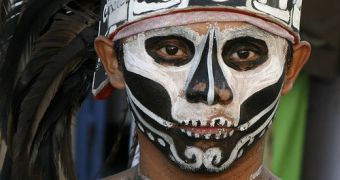A new study carried out by the University of Texas in Austin, concluded that in modern Mexico, there is a strong social inequality based on skin color.
People might believe that in contemporary Mexico, every one is the same and there is no prejudice based on race or on skin color, but according to this new study, Mexicans with darker skin tones have less education, lower status jobs and more chances of being poor and living in poverty.
Andrés Villarreal, an associate professor in the Department of Sociology and the Population Research Center affiliate conducted a study on 2,000 participants, representative for the entire nation.
They were divided in three categories, based on skin color: white – blanco/güero, light brown – moreno claro, and dark brown – moreno oscuro.
The survey also assessed the link between skin color and socioeconomic status.
Results showed that light brown participants had 29.5% lower chances of having a college education and Mexicans with dark brown skin had 57.6% lower odds, compared to white-skin participants.
Once the educational factor is considered, there is no significant difference in occupational status between light-brown and white respondents, and especially between dark-brown and white participants.
Otherwise said, the difference in access to education depending on color categories can explain a big part of the differences in occupational status.
In other words domestic workers, manual workers, drivers, and security guards are more likely to have dark brown skin, and office supervisors, professional workers or employers, have more chances of having white skin.
The study says that white people represent only 9.4% of manual workers, whereas they count for 28.4% of professionals.
White people have more chances of being in a top occupational category because, for example, light-brown workers have 25.2% lower odds of being a professional worker, while dark-brown participants have 35.9% lower chances of being in the top two job categories.
“These differences in socioeconomic outcomes are, of course, insufficient to demonstrate the persistence of discriminatory practices against individuals based on the color of their skin,” says Andrés Villarreal.
“However, the fact that differences in occupational status across skin color categories cannot be fully explained by other factors, suggests that Mexicans with darker skin tones may in fact face discrimination in the labor market.”
The findings were published in the October 2010 issue of the American Sociological Review.

 14 DAY TRIAL //
14 DAY TRIAL //